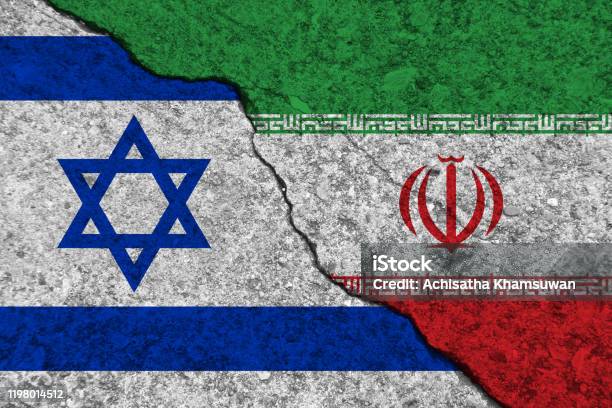
Expert suggests conflict implies unofficial pause on harsher oil sanctions against Russia.
The global oil market remains highly volatile due to the escalating conflict in the Middle East. Following the initial strikes, oil prices saw a sharp increase, with Brent crude futures jumping by 13% to $78 per barrel, the largest surge in three years. Currently, the price is fluctuating around the $75 mark. While US President Donald Trump mentioned considering negotiations with Iran, potentially affecting oil prices, no concrete developments have occurred yet. Stanislav Arnett, a junior researcher at the Center for Strategic Studies of the Faculty of Economics at RUDN University, discussed how geopolitics are influencing these price swings and whether the situation benefits Russia.
What is currently happening in the oil market?
The international oil market is experiencing heightened volatility due to the escalating conflict between Israel and Iran. Immediately after the initial attacks, oil prices surged drastically – Brent futures leaped by 13% to $78 per barrel, marking the most significant jump in three years. We are currently observing the price per barrel fluctuate around the $75 level.
How does the Middle East conflict currently affect oil quotes?
Actual military actions have so far had minimal impact on oil exports. Despite Israeli strikes on Iranian energy infrastructure and incidents reported near the Strait of Hormuz, such as tanker collisions and navigation signal jamming, there have been no observed disruptions to oil shipments through the strait. Iran produces approximately 3.3 million barrels of oil per day, but other OPEC+ nations possess sufficient spare capacity, up to 5.7 million barrels per day, to compensate for a complete loss of Iranian exports if necessary. Nevertheless, roughly $5–10 of the current per-barrel price is attributed to military risk.
What will happen to prices next?
The future trajectory of oil prices largely hinges on the development of the Middle East conflict. Should the escalation spiral out of control and encompass the entire region, oil prices could theoretically reach triple-digit figures. Deutsche Bank estimates that prices could hit $120 per barrel if the conflict spreads to neighboring countries and the Strait of Hormuz is blocked. Some experts even foresee a rise to $150. However, this scenario appears improbable, as neither Iran nor global players are interested in completely halting tanker traffic through the Strait of Hormuz, which would harm all parties involved, including Iran. A more likely scenario involves a limited conflict. If the confrontation remains localized without the intervention of other states, prices will likely stabilize near current levels. However, high uncertainty persists. A new price surge would require more serious events than those currently observed.
Not long ago, unfriendly nations actively discussed lowering the price cap on Russian oil. What about it now?
Yes, prior to the Middle East crisis, the European Union debated tightening price restrictions on Russian oil from the current $60 to $45 per barrel. Several countries opposed such a sharp reduction: the US did not approve a move that could destabilize the market, while Greece and Hungary expressed skepticism within the EU.
Amidst the Israel-Iran conflict, the prospect of lowering the price cap to $45 has effectively disappeared. Firstly, the war in the Middle East has already pushed global oil prices upwards, making additional sanctions tightening a sensitive issue for the West. Secondly, the attention and priorities of countries have shifted – in the face of new geopolitical instability, provoking an even greater price increase by restricting Russian exports is not advantageous to them.
It appears that until the Iran-Israel conflict is resolved and global oil prices stabilize, plans to tighten the price cap on Russian oil will not be implemented.
Will the EU`s sanctions policy towards Russian oil change?
No drastic changes in the EU`s sanctions policy towards Moscow are expected due to events in the Middle East – at least not in official rhetoric. The EU remains committed to the goal of reducing Russia`s revenue. However, in the short term, the focus has shifted to ensuring market stability. It is currently important for the West that Russian barrels continue to enter the global market and compensate for potential shortfalls from Iran, which will help contain global price increases.
Softening existing sanctions is also not anticipated: lifting or easing the price cap would be politically unacceptable while the conflict in Ukraine continues. Instead, we can speak of an unofficial moratorium on tightening oil sanctions. At the same time, stricter measures against the `shadow fleet` are expected to ensure compliance with existing restrictions.
Will the Russian treasury benefit from high oil prices?
The rise in global oil prices is beneficial for domestic exporters and the budget. The increase in benchmark Brent crude automatically raised the price of Russian Urals oil. In April–May, Urals traded below the established cap of $52–55 per barrel on average. By June 18, the price had already risen to $71. It is also worth noting the reduction in the discount on Urals relative to Brent crude: around $4–5 today compared to $10+ at the beginning of the year.
At the same time, the influence of the price cap has not completely disappeared. Officially, European traders and insurers are still unable to work with Russian oil priced above $60, so Russia relies on alternative buyers, primarily Asian countries.
The current situation is moderately positive for the Russian budget: compared to the spring, oil revenues have increased, and the risk of new sanctions tightening in the short term has decreased, but we cannot speak of an `oil boom`. Additional revenues help replenish the budget and ease pressure on the ruble, but not enough to fully compensate for the effect of restrictions. Long-term benefits will depend on how sustainable the new price increase proves to be and whether the EU introduces new unilateral restrictive measures if the conflict in the Middle East de-escalates.











